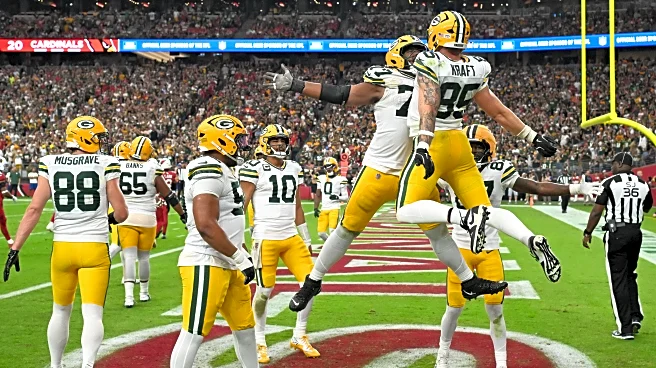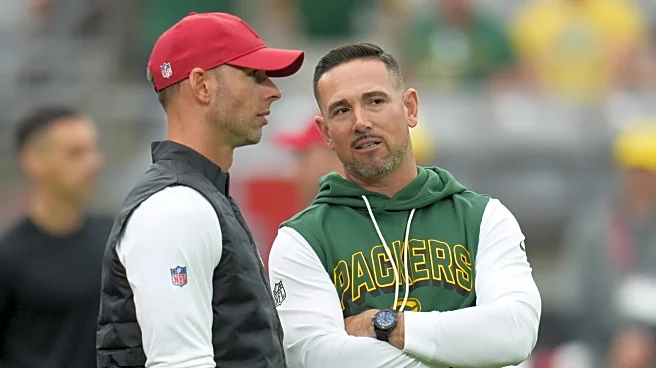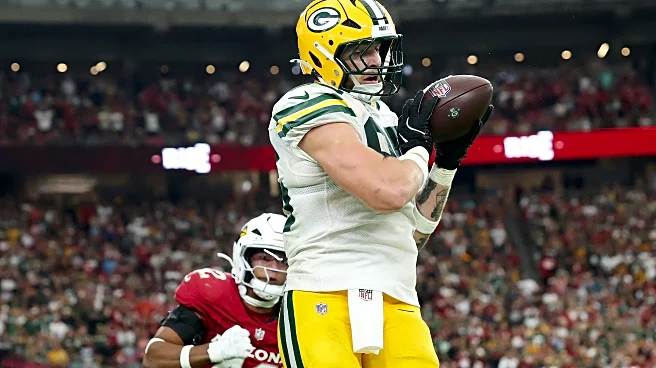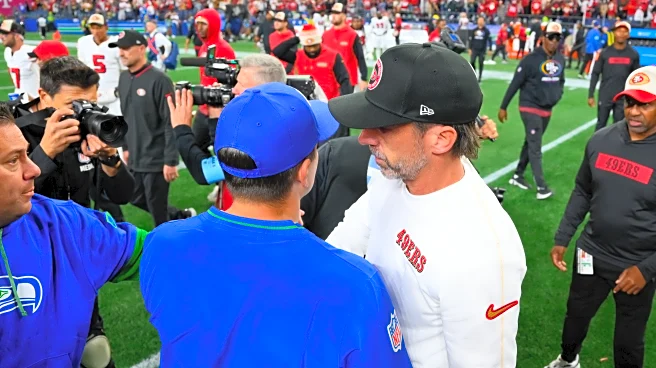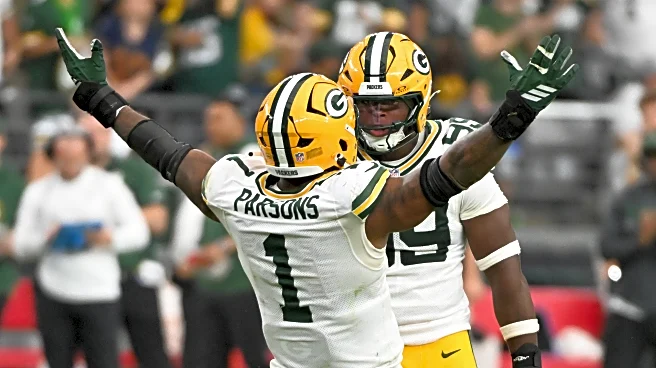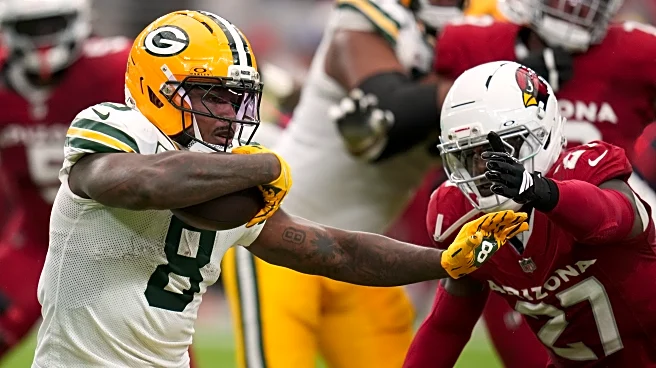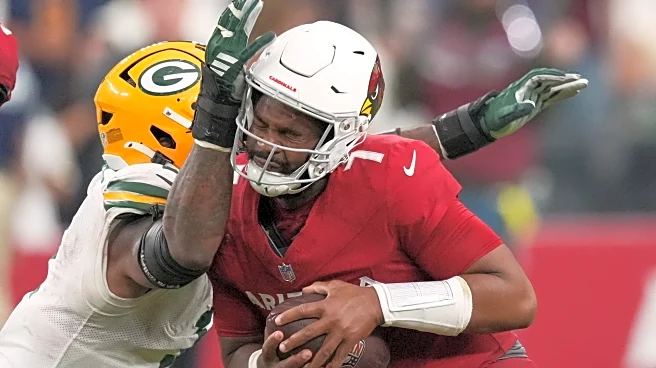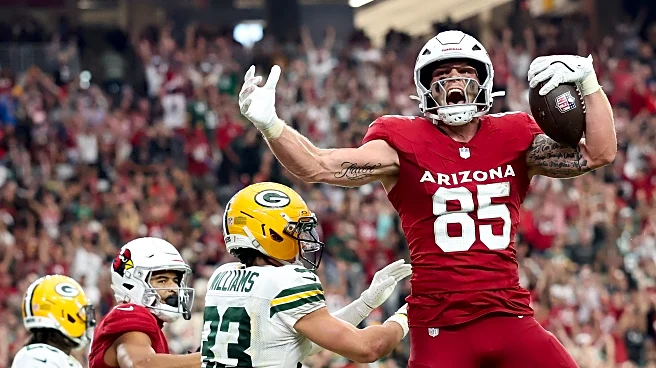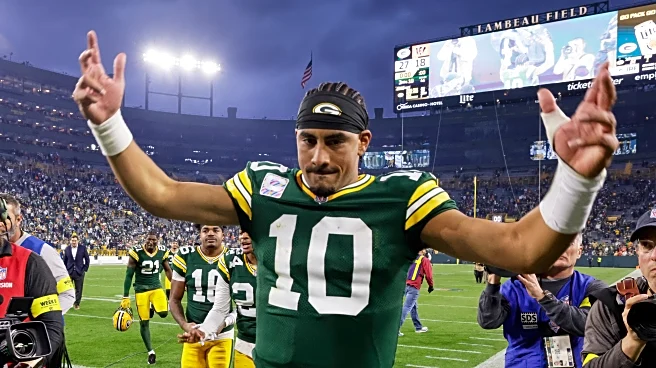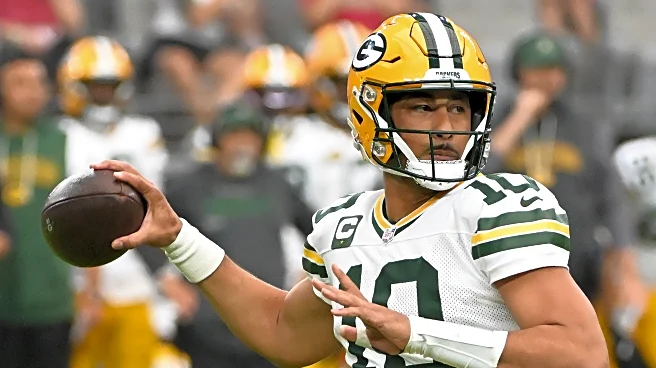It wasn’t always pretty (particularly in the first half), but the Green Bay Packers pulled out an ugly victory over the Arizona Cardinals in week 7 to get to a 4-1-1 record. As we do every week, we’re
taking a look at the performance of the passing game. So let’s stop talking about it and get down to doing it.

There’s nothing really flashy here in Jordan Love’s passing chart from this game. Love primarily operated in the short area of the field, and it shows up on this chart. Per NextGen, his ADOT (Average Depth Of Target) was 7.2 yards, 17th among QBs in Week 7 (the QB with the highest ADOT in Week 7 was Tyrod Taylor at 14.9).
The Cardinals came into this game as the 9th-worst defense in the league in terms of allowing YAC (Yards After Catch), but they also sport a pretty funky defense. They play a lot of 3-safety looks and employ a lot of pre-snap disguises to catch offenses in a trap after the ball is snapped. The Packers went in with a pretty clear plan: run a lot of quick-game and get the ball out to players in space to both capitalize on the Cardinals poor track record after the catch and to not get tricked into a disaster. They had a couple called shot plays and some deeper options if they liked the look, but, for the most part, they lived in quick game.
On the whole, it worked pretty well. Packers receivers racked up 77 yards in YAC and Love played a mistake-free game while being pressured on 33.3% of his dropbacks (12th among QBs in Week 7).
For the game, Love turned in a positive EPA per Dropback (+0.18). That had him as the 9th ranked QB in Week 7. Much like the game showed, that number isn’t eye-popping, but he made good decisions and played a clean game. We also saw him scramble 3 games in this game, picking up 23 yards on those scrambles. Each of those scrambles resulted in a successful play for the offense, which is what you want to see when your QB takes off from the pocket. Coming into the season, we hoped that Love’s legs would add another dimension to his game this year, and we’ve already seen that pay off multiple times through 6 games.
Let’s take a look at a couple plays before we get out of here, both of which attacked the middle of the field and set up scoring plays.
Play 1: 1st & 10, 00:07 remaining in the 2nd quarter
This was a huge moment in the game. The Cardinals have just scored a TD with 7 seconds remaining in the first half to take a 13-3 lead. After a touchback, the Packers get the ball at their own 35 yard line. With the end-0f-half sequence against the Cowboys still in the back of their minds, would they kneel out the ball and go into the half down 10 points, or come out and run a play in an attempt to get into field goal range?
They come out and immediately align in shotgun, so they clearly will not be kneeling out the half. They’re in 11 personnel (1 RB, 1 TE, 3 WR) in a 2×2 condensed formation. The Cardinals are putting an umbrella on this, aligning 3 safeties deep and everyone else within 5 yards of the line of scrimmage.
Emanuel Wilson [23] is the running back and he is aligned on Love’s left. Before the snap, Wilson motions out, then returns to Love. The Cardinals have a defender mirror the motion, signaling that they are likely in Man coverage. Love sees this and gives a “Can” call to the offense.
There are some playcalls that are two playcalls, and the QB has the ability to check to the second play if the defense gives a specific look. Those calls are joined by the word “Can”. If the first call in the sequence matches up well with what the defense is showing, he’ll snap the ball and they’ll run that play. If the second call is a better choice against the defensive look, the QB will yell “Can Can Can” and tap his helmet, checking to the second play in the sequence.
That’s what Love is doing here. Without being in the huddle it can be nearly impossible to know what the original call is, but, based on the information gathered by the motion, it’s safe to say that the first call in the sequence was a zone beating concept, while the second call in the sequence was a man beating concept.
They send Matthew Golden [0] in jet motion, then snap the ball with him and motion and wheel him up the sideline. Then they run High Cross with Romeo Doubs [87] and Dontayvion Wicks [13]. This is a concept that works well against Man Free (single-high safety, man coverage underneath). With the safeties as deep as they are, this is almost a Cover 0 look without the pressure: you don’t have to worry about safety help, you just have to worry about the receivers beating their men.
Both Doubs & Wicks get inside releases, immediately giving them leverage against their defenders. They cross at about 15 yards, with Wicks bending slightly vertical and Doubs flattening to cross underneath.
Doubs is able to get immediate separation off the line, and the flattening at the top of the route gives him a little more separation late in the down.
Love is able to calmly hit Doubs for a 22 yard gain.
It sets up Lucas Havrisik for a 61 yard field goal attempt, which he drills, setting a Packers franchise record in the process.
The Packers go into the half down 13-6 instead of 13-3.
Play 2: 1st & 10, 10:36 remaining in the 3rd quarter
With the Packers just outside the red zone, they roll with Mesh. Mesh is an Air Raid concept that the Packers used to have as a big part of their passing offense. It slowly went the way of the buffalo after 2021, but they’ve been working in back in a little more this year, much to my delight.
It’s a concept that works well against man coverage. And, though the motion doesn’t seem to give them that tell on this rep, there must have been something in film study that did. The Cardinals bump over with the motion and roll a safety down over Doubs, while the defender over Doubs bumps outside to take Golden.
The ball is snapped just before Golden truly settles in, giving him an inside step on the defender. Mesh centers around two shallow drag routes that cross in the middle of the field, which can cause a defender to have to run through a lot of traffic to stay with his man. With Golden already having an advantage at the snap – and Doubs creating the initial traffic with his vertical route – he easily gains separation across the field.
Love finds him on the right and Golden is able to turn upfield for a gain of 17.
The Packers would score a TD on the next play on a 7 yard rush from Josh Jacobs, tying the game at 13.
Through 6 games, the passing game has not been the world-beating group I hoped it would be, but this feels like a group on the verge of breaking out. The operation (in terms of route running/spacing, timing and protection) has been a little smoother out of the bye, and those are promising signs as we start to think about how the rest of the season could go.
If we could get them to pick up their pace of play, we’d really be cooking.
Albums listened to: Tame Impala – Deadbeat; The Cool Kids – Hi Top Fade; Keren Ann – Paris Amour; Yellowcard – Better Days; Elliott – False Cathedrals
